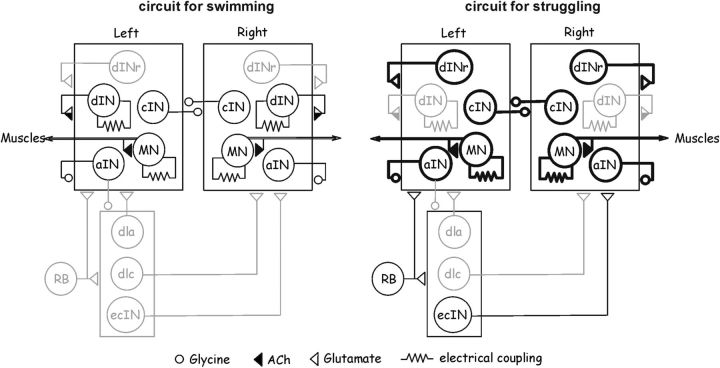Figure 8.
Reconfiguration of tadpole motor circuits by intrinsic properties during swimming and struggling. During swimming (left), cINs, MNs, and aINs, but not dINrs, receive sufficient background excitation to inactivate IA and enable them to fire reliably. During struggling (right), strong excitation inactivates IA in cINs, MNs, aINs, and dINrs, and allows them to fire vigorously, but dIN activity is suppressed by INa+ inactivation. Repetitive activation of RB neurons also recruits ecINs during struggling. Synapses on boxes mean all neurons inside receive the inputs. Thick black lines indicate vigorous firing. Gray shows little/weak activity. Only sensory pathways on the left side are shown. dlc, Dorsolateral commissural interneurons; dla, dorsolateral ascending interneurons.

